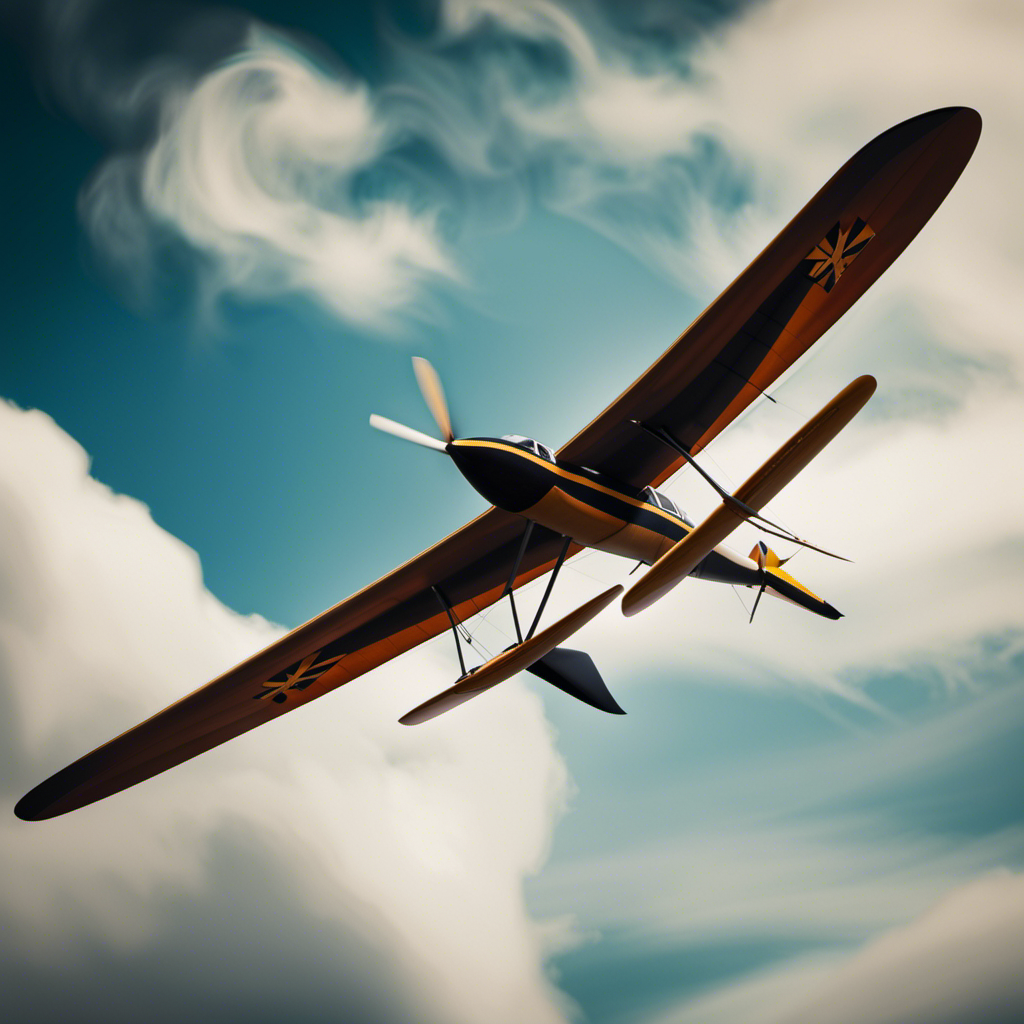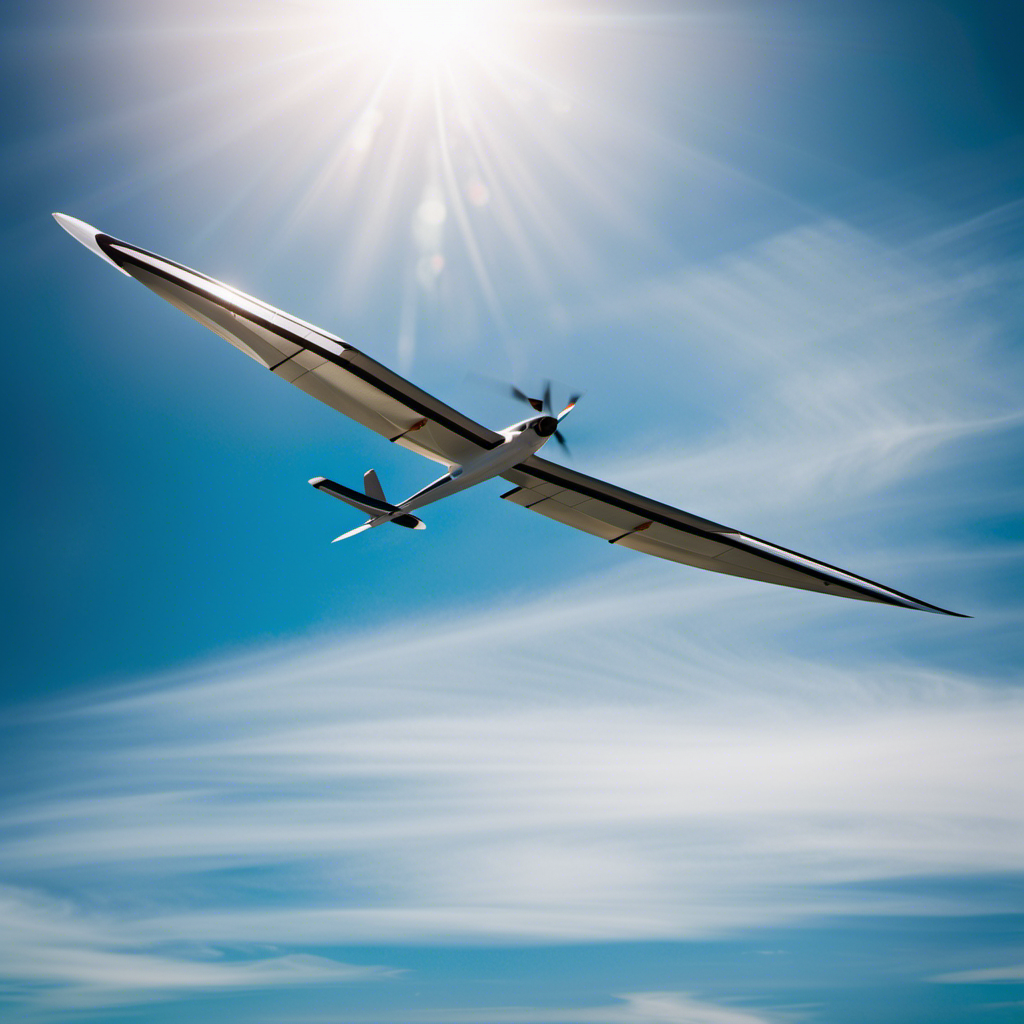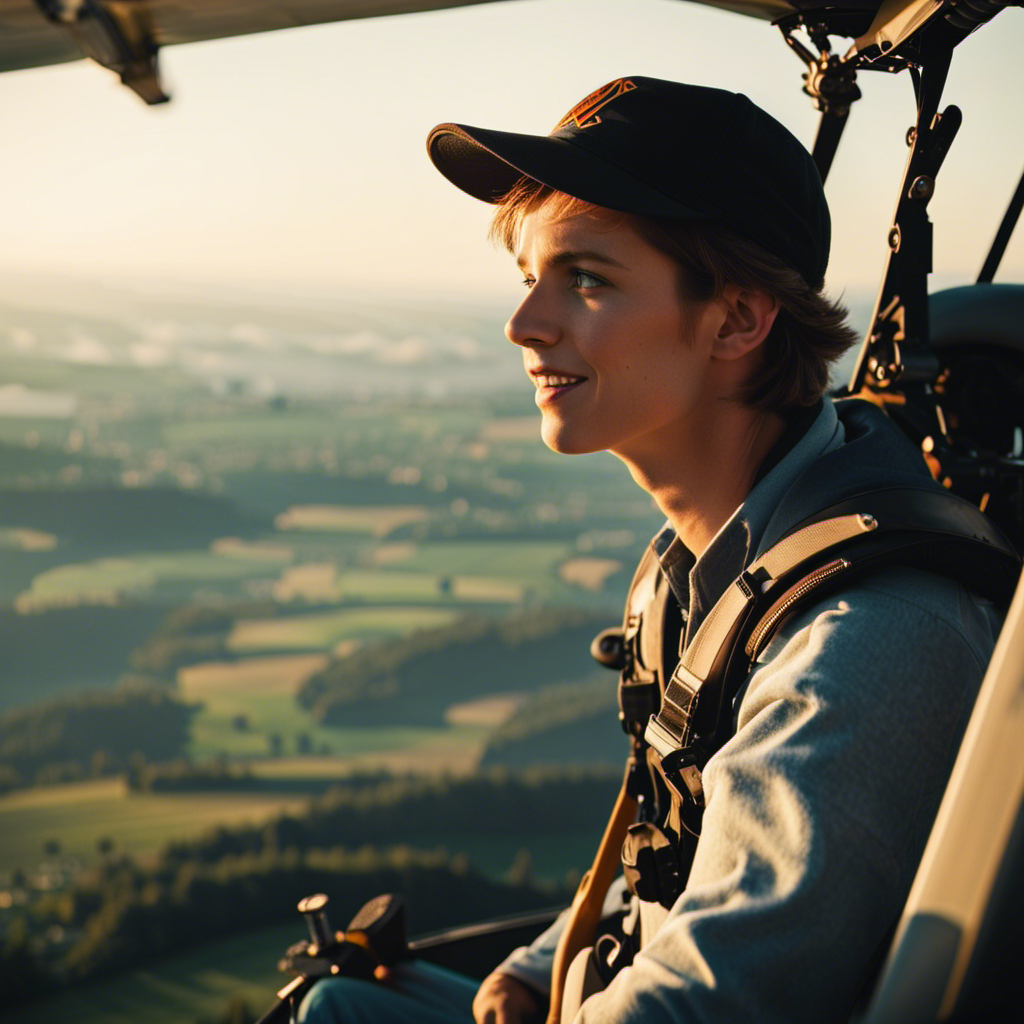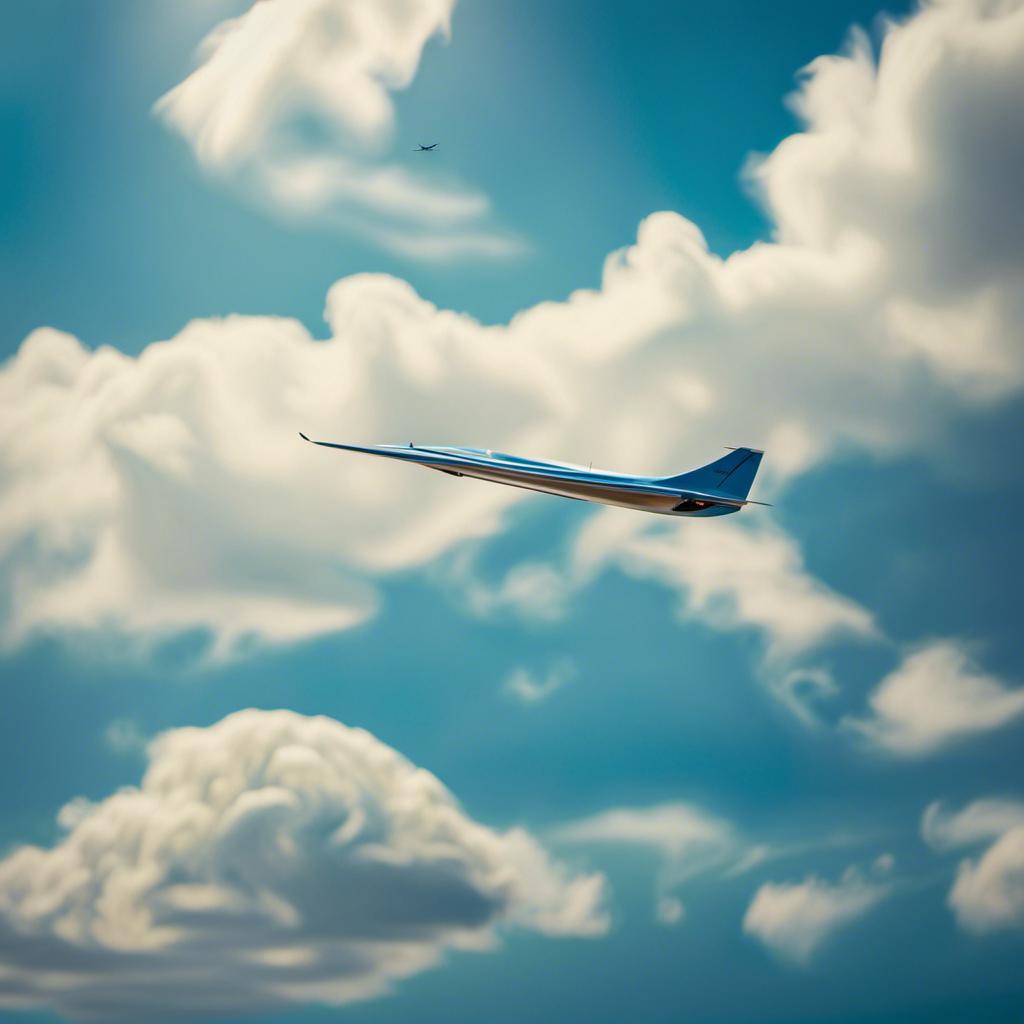Ever wondered what sets a glider apart from a powered aircraft? If you have, come along as we explore the fascinating world of flight to uncover the key differences between these two types of airplanes.
In this article, we’ll break down the basic definitions and functions of gliders and powered planes, delve into how they stay airborne, examine variations in design and construction, and discuss the skills and training required for piloting each type.
So, fasten your seatbelt and get ready for an enlightening journey through the skies!
Key Takeaways
- Gliders are engineless aircraft that rely on wind and air currents for flight, while powered planes use engines to generate thrust.
- Gliders generate lift through the shape and position of their wings, while powered planes use engines to create thrust for forward motion.
- Gliders rely on air currents and updrafts for lift, while powered planes can take off vertically and climb to higher altitudes.
- Gliders have a lighter structure and longer wingspan for better lift and drag reduction, while powered planes have internal combustion engines for sustained flight.
Basic Definition and Function of a Glider
A glider is an aircraft that flies without an engine, relying solely on the natural forces of wind and air currents to stay aloft. Gliders are designed to generate lift by utilizing the shape of their wings and the angle at which they are positioned relative to the oncoming air.
The wings of a glider are typically long and slender, allowing for greater lift and improved soaring capabilities. To take off, a glider is usually towed into the air by another powered aircraft or launched from a high point, such as a hill or cliff.
Once in the air, the pilot uses skillful techniques to find and utilize rising air currents, such as thermals and ridge lift, to sustain flight and gain altitude. Gliders are prized for their ability to fly silently and efficiently, offering a unique and serene flying experience.
Now, let’s move on to the basic definition and function of a powered plane.
Basic Definition and Function of a Powered Plane
To understand how a powered plane operates, you need to know that it uses an engine to generate thrust and maintain flight. The engine is typically a piston engine or a jet engine, which is responsible for converting fuel into mechanical energy. This energy is then used to rotate the propeller or drive the jet exhaust, creating a force that pushes the plane forward.
As the plane moves forward, air flows over the wings, creating lift. The wings are specifically designed to generate lift by utilizing the principles of aerodynamics. The shape of the wings, along with the angle of attack and airspeed, determines the amount of lift produced. This lift counteracts the force of gravity, allowing the plane to stay airborne.
How Gliders Stay in the Air
When it comes to staying in the air, gliders rely on a combination of factors and techniques. Utilizing air currents and updrafts is a crucial part of their strategy, as these natural phenomena provide the necessary lift.
Gliders also employ specific gliding techniques and maneuvers to maximize their efficiency. They adjust their angle of attack and bank into turns.
These techniques allow gliders to maintain their altitude and even gain height without the use of an engine.
Utilizing Air Currents and Updrafts
You can take advantage of air currents and updrafts to increase your altitude and extend your flight time while gliding. Understanding these natural phenomena and how to utilize them effectively can greatly enhance your gliding experience. Here are some key air currents and updrafts that you can use:
| Air Currents | Updrafts |
|---|---|
| Ridge Lift | Thermal Lift |
| Lee Waves | Convergence Zone |
Ridge lift occurs when wind encounters a ridge or mountain, causing it to rise. This can provide a continuous source of lift as long as the wind is blowing against the ridge. Thermal lift, on the other hand, is created by the sun heating the ground, causing air to rise in columns. By flying in areas with strong thermals, you can gain altitude and stay airborne for longer periods. Lee waves are created when wind flows over mountains, producing alternating areas of lift and sink. Lastly, convergence zones occur when two air masses with different temperatures and humidity meet, creating lift.
Gliding Techniques and Maneuvers
By mastering various gliding techniques and maneuvers, you can enhance your flying skills and have greater control over your glider. One important technique is called thermaling, which involves circling within a rising column of warm air. This allows you to gain altitude and stay aloft for longer periods.
Another technique is ridge soaring, where you fly along the edge of a hill or mountain, utilizing the upward wind that is deflected off the slope. This technique requires precise control to maintain a constant height above the ridge.
Additionally, you can perform aerobatic maneuvers such as loops, spins, and stalls to push the limits of your glider’s capabilities. These techniques and maneuvers require practice and skill, but they will greatly improve your ability to navigate and enjoy the art of gliding.
Transitioning into how powered planes stay in the air, it’s important to understand the role of engines and propulsion systems.
How Powered Planes Stay in the Air
To stay in the air, powered planes use engines that create thrust. These engines generate forward motion by expelling a high-speed stream of air or exhaust gases. The thrust produced by the engines counteracts the drag force that opposes the plane’s forward motion, allowing it to maintain a steady speed and altitude.
The engines used in powered planes can vary in design, but they all work on the same principle of converting fuel into mechanical energy. Jet engines, for example, compress incoming air, mix it with fuel, and ignite it to produce a powerful exhaust stream. Piston engines, on the other hand, use reciprocating pistons to compress fuel-air mixtures, which are then ignited to generate thrust.
Here is a table comparing some common types of engines used in powered planes:
| Engine Type | Advantages | Disadvantages |
|---|---|---|
| Jet Engine | High thrust-to-weight ratio, high speeds | Expensive, high fuel consumption |
| Piston Engine | Relatively low cost, reliable, fuel-efficient | Limited top speed, lower thrust-to-weight ratio |
Understanding how powered planes stay in the air is essential when examining the differences in design and construction between gliders and powered planes.
Differences in Design and Construction
When considering the design and construction of powered planes and gliders, it’s important to note the variations in engine types and propulsion systems.
Powered planes typically have an internal combustion engine that provides thrust through a propeller or jet, allowing them to maintain sustained flight. These engines require fuel and have the ability to generate power, enabling the plane to take off vertically and climb to higher altitudes.
On the other hand, gliders rely on external forces like gravity and air currents to stay airborne. They don’t have an engine or propulsion system, so they must be launched using a tow plane or winch. Gliders have a lighter structure and longer wingspan to maximize lift and minimize drag.
These design and construction differences influence the way these aircraft take off and land, which will be explored in the next section.
Differences in Takeoff and Landing
When it comes to launching methods for gliders, there are a few key options to consider.
One common method is a tow launch, where the glider is attached to a powered plane and towed into the air.
Another method is a winch launch, where a cable is attached to the glider and a winch rapidly pulls it into the air.
As for runway requirements for powered planes, it is important to consider factors such as the plane’s weight, takeoff speed, and runway length.
A heavier plane will require a longer runway for takeoff, while a lighter plane may be able to take off in a shorter distance.
Additionally, the takeoff speed of the plane will also impact the required runway length.
Launching Methods for Gliders
Launching methods for gliders include being towed by a powered aircraft or using a winch to launch from the ground. When a glider is towed, it is attached to a powered aircraft by a long rope, and the pilot of the glider controls the towline release. Once the glider is at the desired altitude, the towline is released, and the glider can soar freely.
Another method is launching a glider using a winch. A winch is a device that uses a powerful engine to rapidly reel in a cable attached to the glider. As the cable is reeled in, the glider gains speed and lift, allowing it to take off. Both towing and winch launching methods are commonly used for gliders, providing them with the necessary initial momentum to stay airborne.
Now, let’s shift our attention to runway requirements for powered planes.
Runway Requirements for Powered Planes
To safely take off, powered planes require a runway of sufficient length and strength. Here are four important factors to consider when it comes to runway requirements for powered planes:
-
Length: The length of the runway is crucial as it directly affects the takeoff performance of the aircraft. Longer runways allow planes to build up more speed before lifting off, which is especially important for larger and heavier aircraft.
-
Pavement Strength: The runway must be able to withstand the weight and pressure exerted by the aircraft during takeoff. The strength of the pavement is determined by its thickness, composition, and underlying support structures.
-
Obstacle Clearance: The runway should have sufficient clear space at both ends to ensure the aircraft can safely take off and land without any obstructions. This includes accounting for factors such as trees, buildings, or other obstacles that may hinder the plane’s path.
-
Markings and Lighting: Runways must be properly marked and adequately lit to ensure visibility for pilots during takeoff and landing, especially during low-light conditions or at night.
Understanding these runway requirements is crucial for pilots and airport authorities to ensure safe and efficient operations for powered planes.
Now, let’s explore the next aspect of powered planes: their range and endurance.
Range and Endurance
If you want to maximize your range and endurance, a powered plane is the better choice compared to a glider. With its ability to generate thrust and maintain a constant level of power, a powered plane can cover greater distances and stay in the air for longer periods of time.
The engine-driven propeller provides the necessary propulsion to counteract drag and keep the aircraft moving forward. Additionally, the fuel capacity of a powered plane allows for extended flights without the need for frequent refueling. This is particularly advantageous for cross-country trips or when flying in remote areas with limited access to fueling stations.
The combination of engine power and fuel capacity gives powered planes a significant advantage over gliders when it comes to range and endurance.
When it comes to pilot skills and training, the differences between flying a glider and a powered plane become apparent.
Pilot Skills and Training
Pilots, whether flying gliders or powered planes, must develop specific skills and undergo training. While some skills are common, there are differences that pilots must master.
Glider pilots need to be proficient in handling the aircraft during takeoff. They rely on launching methods like aerotow or winch launch. They also need to understand glider aerodynamics and how to use thermals for sustained flight.
Powered plane pilots, on the other hand, must be well-versed in engine operation and management. They also need navigation and communication skills. Additionally, they must be trained in emergency procedures specific to powered airplanes, such as engine failure and emergency landings.
These skills and training are crucial for ensuring safety in both glider and powered plane operations.
Safety Considerations for Gliders and Powered Planes
When it comes to flying, it’s crucial to be prepared for any emergency situation that may arise. Understanding the emergency procedures and landing options available to you is essential for your safety and the safety of others on board.
Additionally, staying up to date with maintenance and inspection requirements is vital to ensure the continued airworthiness of your aircraft. By following these guidelines, you can confidently navigate the skies and minimize the risks associated with flying.
Emergency Procedures and Landing Options
You should always be aware of your emergency procedures and landing options when flying a glider or a powered plane. In the event of an emergency, knowing what to do and where to land can make all the difference.
For gliders, the options are more limited as they rely solely on the natural elements for lift. You must be familiar with emergency landing sites such as fields or airports along your flight path.
Powered planes, on the other hand, have more flexibility in terms of landing options due to their ability to generate their own thrust. In addition to designated airports, powered planes can also consider emergency landings on roads or open fields if necessary. Being well-prepared and knowledgeable about emergency procedures and landing options is crucial for a safe flight.
Understanding emergency procedures and landing options is just one aspect of ensuring the safety of your aircraft. Maintenance and inspection requirements are equally important in maintaining the airworthiness of your glider or powered plane.
By regularly inspecting and maintaining your aircraft, you can prevent potential issues and ensure that it is in optimal condition for flight. Regular inspections should include a thorough examination of the engine, control surfaces, landing gear, and other critical components.
Any necessary repairs or replacements should be promptly addressed to maintain the aircraft’s safety and performance. Additionally, following the manufacturer’s recommended maintenance schedule and guidelines is essential for the continued airworthiness of your aircraft.
Maintenance and Inspection Requirements
Now that you understand the emergency procedures and landing options for gliders and powered planes, it is crucial to delve into the maintenance and inspection requirements that ensure the safe operation of these aircraft.
Regular maintenance and inspections are vital to identify and address any potential issues or wear and tear that may compromise the aircraft’s performance or safety. These requirements include regular engine checks, control surface inspections, and structural examinations to ensure the airframe’s integrity.
Additionally, proper lubrication, fuel system inspections, and electrical system checks are essential for the smooth operation of powered planes. By adhering to these maintenance and inspection requirements, you can mitigate the risk of mechanical failures and ensure optimal performance during flight.
As we explore the applications and uses of gliders and powered planes, it is crucial to understand the importance of maintaining these aircraft.
Applications and Uses
The main difference between a glider and a powered plane is that the latter can be used for a wider range of applications and uses. While gliders rely solely on air currents to stay aloft, powered planes have engines that allow them to generate their own thrust and fly in any direction. This versatility opens up a world of possibilities for powered planes, from transportation and recreation to military and scientific endeavors. Here is a table highlighting some of the diverse applications and uses of powered planes:
| Application | Description |
|---|---|
| Commercial Aviation | Used for passenger and cargo transport, connecting people and goods across the globe. |
| Aerial Photography | Enables capturing stunning images and videos from the sky, providing unique perspectives. |
| Search and Rescue | Facilitates locating and assisting people or objects in distress, saving lives in critical situations. |
| Agricultural Spraying | Helps distribute fertilizers and pesticides to crops, increasing efficiency and yield. |
Powered planes truly offer endless possibilities, making them an essential tool in various industries and activities.
Frequently Asked Questions
What are the advantages of flying a glider compared to a powered plane?
Flying a glider has several advantages over a powered plane. Gliders are quieter, more economical, and environmentally friendly. They offer a unique sense of freedom and challenge, as they rely solely on the natural forces of wind and thermals for propulsion.
Can gliders fly at night or in adverse weather conditions?
No, gliders cannot fly at night or in adverse weather conditions due to their lack of an engine and reliance on thermal currents for lift. This makes them more limited in their flying capabilities compared to powered planes.
Are there any limitations on the distance a glider can travel compared to a powered plane?
In terms of distance, gliders have a slight disadvantage compared to powered planes. Due to their lack of an engine, they heavily rely on thermals and updrafts for lift, limiting their ability to cover long distances without landing and finding new sources of lift.
How are gliders and powered planes regulated and licensed?
To regulate and license gliders and powered planes, aviation authorities require pilots to obtain specific certifications and ratings, such as a glider pilot license or a private pilot license for powered planes, ensuring they meet safety standards and possess the necessary skills.
Are gliders and powered planes subject to the same maintenance and inspection requirements?
Yes, gliders and powered planes are subject to different maintenance and inspection requirements. While powered planes require regular engine maintenance, gliders focus more on airframe inspections and control system checks.
Conclusion
Now that you’ve delved into the intricacies of gliders and powered planes, you can appreciate the subtle yet significant differences between the two.
Gliders, with their graceful flight and reliance on natural forces, offer a serene and captivating experience. It’s akin to gliding through the clouds on the wings of a dream.
Powered planes, on the other hand, provide a more dynamic and exhilarating journey. They empower you to conquer the skies with controlled precision.
Whichever path you choose, the world of aviation holds endless possibilities to fulfill your soaring aspirations.
With a heart that soars as high as the skies, Aria, affectionately known as “Skylark,” is the driving force behind Soaring Skyways. Her journey into the gliding world began as a young dreamer gazing up at the soaring birds, yearning to experience the weightlessness and freedom they embodied. With years of experience both in the cockpit and behind the scenes, Aria’s commitment to the gliding community is unwavering.










